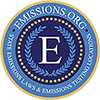Last updated on November 20th, 2017
New Mexico Car Insurance – The state of New Mexico’s car insurance system is based on the principals of an at-fault system in which a driver can be found to be at-fault for an accident and will thus be financially liable for all injuries and damages sustained in the accident. In order to protect state residents from the financial burden of having to pay for an accident out of pocket, as well as to protect state motorist from having to pay for injuries or damages caused by another driver, New Mexico requires that all residents purchase a few different types of mandatory coverage. Bodily injury coverage tends to be the most important of all the types required by New Mexico car insurance law due to the fact that it will pay for the injuries of other drivers and their passengers involved in an accident in which the policy holder is at fault. The state requires that every vehicle maintain at least $20,000 in per person bodily injury liability coverage and $50,000 in per accident bodily injury liability coverage. Per person or individual bodily injury coverage is the amount that the insurance company will pay for the injuries sustained by an individual whereas per accident bodily injury coverage is the maximum amount that the insurance company will pay out in order to cover all of the injuries of sustained in an accident. Another type of coverage that is required by New Mexico is property damage liability coverage, which will cover any damage that the policy holder causes to the property of other drivers in an accident. New Mexico requires that every vehicle be insured with at least $10,000 in per accident property damage coverage. If a New Mexico wishes to, they will generally have the option to purchase more coverage than is required by the state. Purchasing larger amounts of liability coverage may increase the price of the insurance policy premiums but it will also reduce the risk of the policy holder having to personally satisfy any financial obligations that extend from an at-fault accident.
In addition to liability coverage, which is the only type of coverage that is required in New Mexico, drivers also have the option to voluntarily purchase a few other types of coverage that will increase the overall financial protection they receive if they are in an accident. Uninsured and underinsured motorist coverage is a popular type of optional coverage with many New Mexico residents because it protects them against uninsured and underinsured drivers. New Mexico residents with uninsured and underinsured motorist coverage stand to receive financial benefits if they are involved in an accident and the at-fault driver is uninsured or does not have enough coverage to pay for all of the injuries or damage that they caused during the accident. Collision and comprehensive coverage is another type of coverage that is often added to insurance policies in New Mexico. Although from a legal standpoint collision and comprehensive coverage is optional most vehicles that are purchased with financing will be required to maintain a certain amount of collision and comprehensive coverage in order to satisfy the insurance requirements of the lender. Collision and comprehensive insurance is similar to property damage liability coverage except that it covers the physical damage to the policy holder’s vehicle and not the vehicle of another party involved in an accident. A less common type of coverage for New Mexico drivers is medical payments coverage, which will cover the medical payments for the policy holder and any passengers in the policy holder’s vehicle that are the result of an accident. Unlike most types of insurance coverage medical payments coverage is not fault based, meaning that is can be used regardless of who was at fault in an accident.
If a New Mexico resident does not wish to purchase an insurance policy that will satisfy state standards they always have the option of providing self coverage. In the case of New Mexico, drivers that want to self insure must be able to prove that they have at least $60,000 available with which to pay for any damages or injuries resulting from an accident that is their fault. If a driver in New Mexico cannot prove financial responsibility, either through an insurance policy or a self insurance certificate, when pulled over or involved in an accident they will susceptible to various penalties allowed under state law. The most common penalty for driving without insurance in New Mexico is a fine up to $300. In some cases, such as a second offense, a New Mexico resident that is caught driving without car insurance and cannot prove financial responsibility through other means could also have their vehicle’s registration suspended. If an uninsured driver goes to court and cannot prove that they had insurance at the time of a traffic stop or accident they could be charged with a misdemeanor and face increased penalties.
